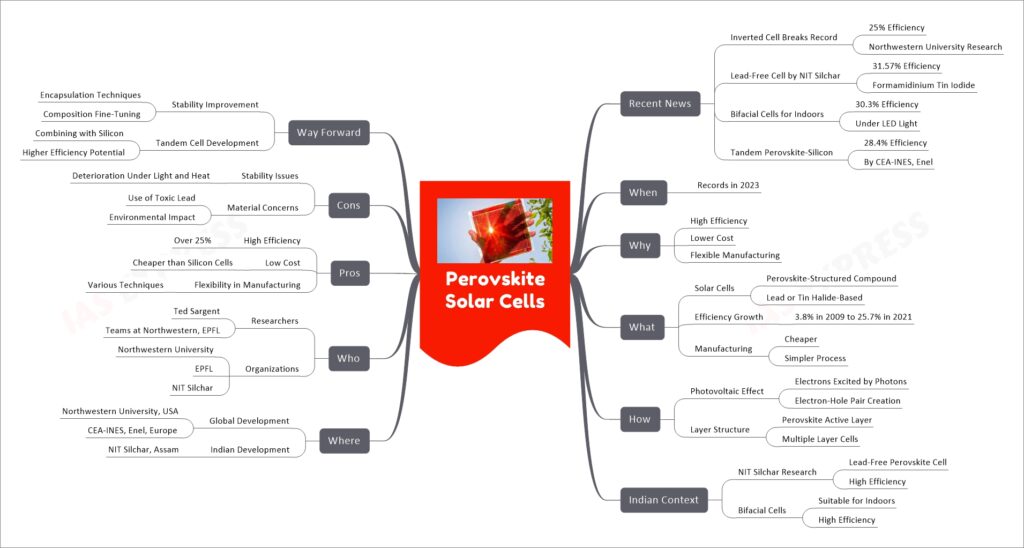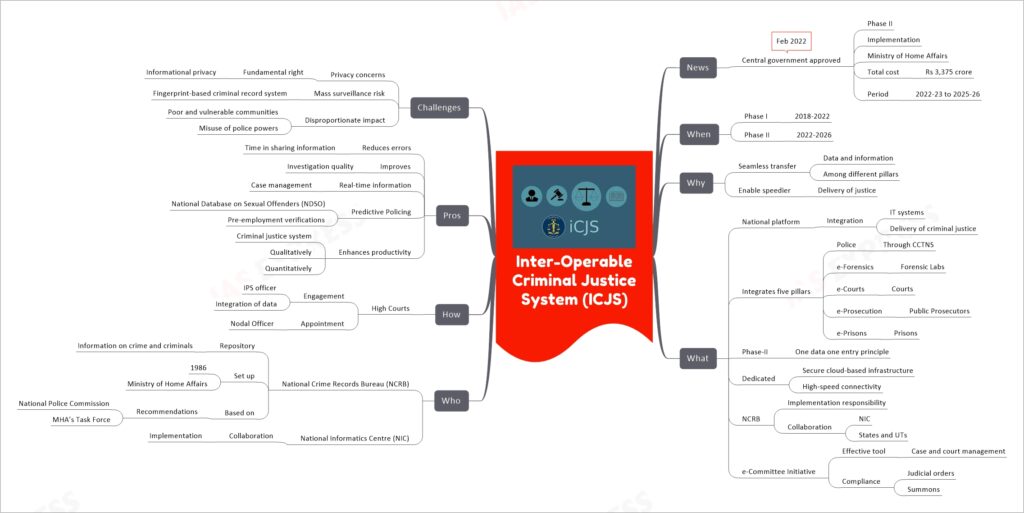[Newsbits] 30.12.2023: Perovskite Solar Cells, Mengxiang, ICJS & more

The Mengxiang is China’s first ocean drilling vessel, recently unveiled with the groundbreaking mission to drill through the Earth’s crust. This ship, set to commence its maiden voyage on December 22, 2023, aims to explore the upper mantle, marking humanity’s first foray into this uncharted territory. The vessel boasts impressive specifications: it measures 179.8 meters in length, 32.8 meters in width, and can operate in any sea globally. With the ability to drill up to 11,000 meters deep and sustain 120 days at sea without needing to return to port, the Mengxiang stands as a symbol of significant advancement in Earth science research and oceanic exploration. The Inter-Operable Criminal Justice System (ICJS) in India is a transformative project aiming to integrate the key components of the criminal justice system, including police, courts, forensic labs, and prisons, into a unified digital platform. This initiative, overseen by the Ministry of Home Affairs and the National Crime Records Bureau (NCRB), is designed to streamline processes, improve information sharing, and enhance the speed and accuracy of judicial procedures. The system operates on the principle of ‘one data one entry’, ensuring that data entered once is accessible across various departments, reducing redundancy and errors. While ICJS promises to significantly improve the functioning of the criminal justice system, it also faces challenges related to privacy, potential mass surveillance, and the risk of disproportionate impact on vulnerable communities. Despite these concerns, ICJS is seen as a crucial step towards a more efficient and effective criminal justice system in India. Marine energy conversion systems harness renewable power from the natural movement of water, including waves, tides, and currents, as well as from temperature differences in water through ocean thermal energy conversion. Recent advancements include the establishment of a technical committee in India to promote standardization in this field. Marine energy has several advantages, including being a renewable source, environmentally friendly, accessible near coastal areas, and having high energy potential. However, it faces challenges such as potential environmental impact, high costs, location dependency, and technological hurdles in durability. The way forward includes innovative designs like the variable-geometry, oscillating, surge wave energy converter developed by NREL, which is more adaptable and cost-effective, and initiatives for wider deployment in the industry. Perovskite Solar Cells (PSCs) are an emerging technology in the field of photovoltaics, characterized by their use of a perovskite-structured compound, usually a hybrid organic-inorganic lead or tin halide-based material, as the light-harvesting active layer. Recent advancements have seen these cells achieve record-breaking efficiencies, surpassing 25%, making them a highly promising alternative to traditional silicon-based solar cells. Researchers worldwide, including those in India, are actively developing more efficient and stable PSCs. The primary advantages of PSCs include their high efficiency, lower production costs, and simpler manufacturing processes compared to silicon solar cells. However, challenges remain in terms of their long-term stability and the use of toxic materials like lead. The future of PSCs looks promising with ongoing research aimed at overcoming these challenges, particularly through the development of tandem cells that combine perovskite and silicon layers for even higher efficiency.


If you like this post, please share your feedback in the comments section below so that we will upload more posts like this.

